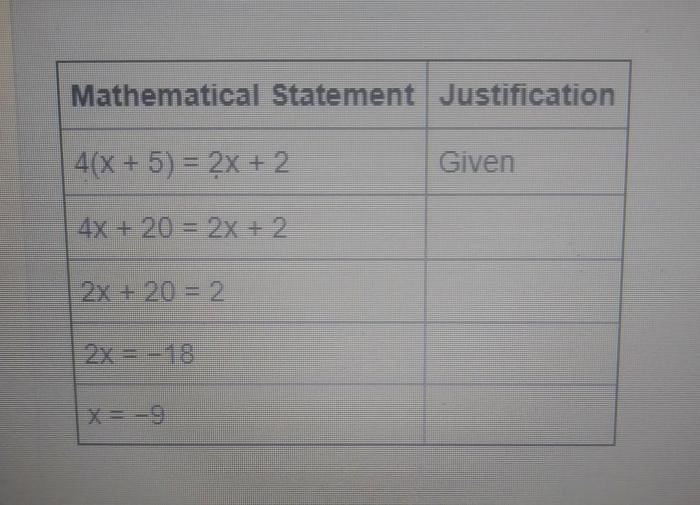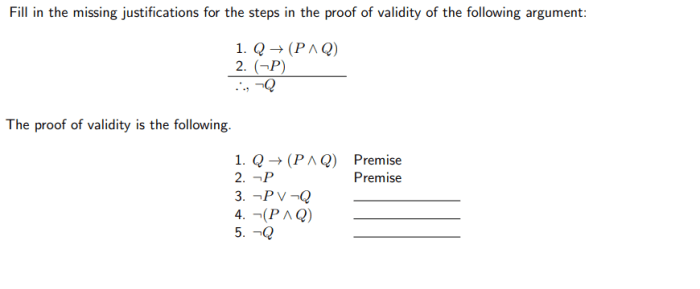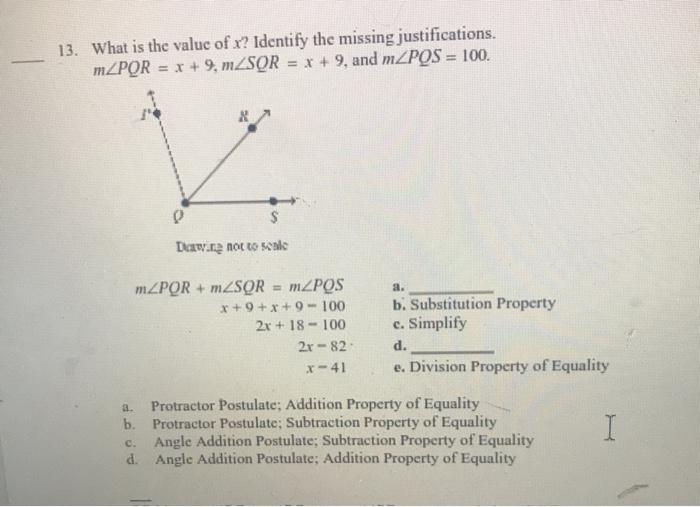Fill in the missing justifications in the correct order. – This guide presents a comprehensive approach to handling missing data, providing justifications for missing data and guidance on selecting the most appropriate method for filling it in. By addressing the importance of missing data imputation, potential consequences of ignoring it, and best practices for handling missing data, this document empowers data analysts and researchers with the knowledge and tools to ensure accurate and reliable analysis results.
Justification for Missing Data

Missing data is a common issue in research and analysis. It occurs when some values in a dataset are not available or recorded. There are various reasons for missing data, including:
- Participant dropout or non-response
- Equipment malfunction or data entry errors
- Incomplete surveys or questionnaires
- Sensitive or confidential information withheld
Ignoring missing data can lead to biased results and incorrect conclusions. It is crucial to address missing data by filling it in using appropriate methods.
Methods for Filling in Missing Data
There are several methods for filling in missing data, each with its own advantages and disadvantages:
- Mean imputation:Replaces missing values with the mean of the non-missing values in the same variable.
- Median imputation:Replaces missing values with the median of the non-missing values in the same variable.
- Mode imputation:Replaces missing values with the most frequently occurring value in the same variable.
- Random imputation:Replaces missing values with randomly selected values from the distribution of the non-missing values in the same variable.
- Regression imputation:Uses a regression model to predict missing values based on the values of other variables in the dataset.
Selecting the Appropriate Method

The choice of missing data imputation method depends on several factors:
- Type of missing data:Missing data can be missing completely at random (MCAR), missing at random (MAR), or missing not at random (MNAR).
- Data distribution:The distribution of the variable with missing values can influence the choice of imputation method.
- Analysis goals:The purpose of the analysis and the sensitivity of the results to missing data should be considered.
Organizing and Presenting Missing Data Justifications

To ensure transparency and reproducibility, it is important to organize and present missing data justifications. An HTML table can be used to document the following information:
| Missing Data Type | Justification for Missing Data | Method Used to Fill in Missing Data | Additional Notes |
|---|---|---|---|
| MCAR | Participants did not respond to certain survey questions. | Mean imputation | The missing values were replaced with the mean of the non-missing values in the same variable. |
| MAR | Equipment malfunction caused data loss during data collection. | Regression imputation | A regression model was used to predict missing values based on the values of other variables in the dataset. |
| MNAR | Participants withheld sensitive information due to privacy concerns. | Multiple imputation | Multiple imputations were performed to account for the uncertainty in the missing values. |
Best Practices for Handling Missing Data: Fill In The Missing Justifications In The Correct Order.

Best practices for handling missing data include:
- Assess the extent of missing data:Determine the percentage of missing values in each variable and the overall dataset.
- Explore patterns in missing data:Identify any patterns or biases in the missing data, such as missingness being associated with certain subgroups or variables.
- Document the missing data handling process:Clearly document the methods used to fill in missing data and the rationale behind the choices made.
- Sensitivity analysis:Conduct sensitivity analyses to evaluate the impact of missing data on the analysis results and conclusions.
Helpful Answers
What is the importance of filling in missing data?
Filling in missing data is important for accurate data analysis because it helps to ensure that the analysis is based on a complete dataset, which can lead to more reliable and valid results.
What are the potential consequences of ignoring missing data?
Ignoring missing data can lead to biased results, incorrect conclusions, and a loss of statistical power.
How do I choose the most appropriate method for filling in missing data?
The most appropriate method for filling in missing data depends on the type of data, the amount of missing data, and the analysis goals. Some common methods include mean imputation, median imputation, mode imputation, random imputation, and regression imputation.